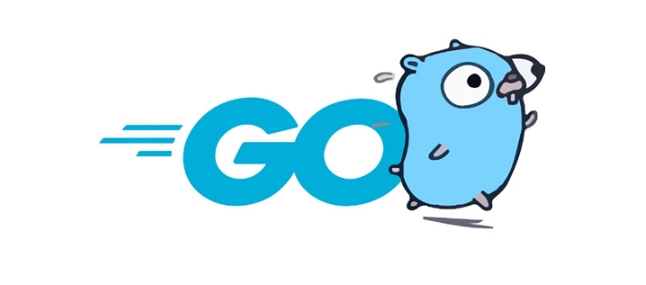- Enable Go's embed by importing "embed", "io/fs", and using Go 1.16 . 2. Use //go:embed static/ and //go:embed templates/ to embed directories into variables of type embed.FS. 3. Serve static files by converting embed.FS to http.FileSystem via fs.Sub() and http.FS(), then use http.StripPrefix("/static/", ...) with echo.WrapHandler() to serve them under /static/. 4. For templates, create a custom Template struct implementing Render, parse embedded files using template.New("").ParseFS(templateFiles, "templates/.html"), assign to echo.Renderer, and use c.Render() to render pages like "index.html" with data. 5. A full working example combines embedded static assets and templates, serving them through Echo routes, and building a single binary with go build ensures no external file dependencies, resulting in a self-contained deployment.

Using Go's //go:embed directive with the Echo web framework is a clean way to serve static files (like HTML, CSS, JS, images) or templates directly from your binary—no need to rely on external file paths in production.

Here’s how to do it step by step.
? 1. Enable embed and import the embed package
First, make sure you're using Go 1.16 and import the embed package:

import (
"embed"
"io/fs"
"net/http"
"github.com/labstack/echo/v4"
)? 2. Use //go:embed to include static files or templates
Suppose you have a directory structure like:
your-project/
├── main.go
├── static/
│ ├── style.css
│ └── script.js
└── templates/
└── index.htmlIn main.go, embed these folders:

//go:embed static/* var staticFiles embed.FS //go:embed templates/* var templateFiles embed.FS
? Note:
embed.FSonly supports string, []byte, orembed.FS. Useembed.FSfor directories.
? 3. Serve static files with Echo
Convert the embedded embed.FS into an http.FileSystem using fs.Sub() and http.FS():
func main() {
e := echo.New()
// Serve static files
subFS, err := fs.Sub(staticFiles, "static")
if err != nil {
e.Logger.Fatal("Error embedding static files:", err)
}
staticFilesHandler := http.FS(subFS)
e.GET("/static/*", echo.WrapHandler(http.StripPrefix("/static/", http.FileServer(staticFilesHandler))))
}This serves /static/style.css → maps to static/style.css in the embedded FS.
? Tip:
http.StripPrefixremoves/static/prefix so the file server looks forstyle.cssinstead of/static/style.cssinside the FS.
? 4. Serve HTML templates (e.g., with html/template)
If you're rendering HTML templates:
//go:embed templates/*.html
var templateFiles embed.FS
// Custom template renderer
type Template struct {
templates *template.Template
}
func (t *Template) Render(w io.Writer, name string, data interface{}, c echo.Context) error {
return t.templates.ExecuteTemplate(w, name, data)
}Load templates from embedded FS:
func main() {
e := echo.New()
// Parse templates from embedded FS
t := &Template{
templates: template.Must(template.New("").ParseFS(templateFiles, "templates/*.html")),
}
e.Renderer = t
// Example route
e.GET("/", func(c echo.Context) error {
return c.Render(http.StatusOK, "index.html", map[string]interface{}{
"Message": "Hello from embedded templates!",
})
})
// ... static file setup (from above)
e.Logger.Fatal(e.Start(":8080"))
}? 5. Full working example (simplified)
package main
import (
"embed"
"html/template"
"io"
"net/http"
"github.com/labstack/echo/v4"
)
//go:embed static/*
var staticFiles embed.FS
//go:embed templates/*
var templateFiles embed.FS
type Template struct {
templates *template.Template
}
func (t *Template) Render(w io.Writer, name string, data interface{}, c echo.Context) error {
return t.templates.ExecuteTemplate(w, name, data)
}
func main() {
e := echo.New()
// Setup templates
t := &Template{
templates: template.Must(template.New("").ParseFS(templateFiles, "templates/*.html")),
}
e.Renderer = t
// Serve static files
subFS, _ := fs.Sub(staticFiles, "static")
e.GET("/static/*", echo.WrapHandler(http.StripPrefix("/static/", http.FileServer(http.FS(subFS)))))
// Render a page
e.GET("/", func(c echo.Context) error {
return c.Render(http.StatusOK, "index.html", nil)
})
e.Logger.Fatal(e.Start(":8080"))
}?? Common pitfalls
- Forgetting
fs.Sub()when embedding a subdirectory. - Not stripping the URL prefix with
http.StripPrefix. - Using incorrect glob patterns in
ParseFSorembed. - Trying to embed files outside the module or in ignored dirs (like
.git,node_modules).
? Bonus: Embed everything into a single binary
Build with:
go build -o server .
Now you can deploy just the binary—it includes all static assets and templates.
That’s it. You now have a fully embedded Echo app with static files and templates—no external dependencies on the file system. Basically just Go, embed, and Echo doing their jobs.
The above is the detailed content of How to use go embed with the Echo framework?. For more information, please follow other related articles on the PHP Chinese website!

Hot AI Tools

Undress AI Tool
Undress images for free

Undresser.AI Undress
AI-powered app for creating realistic nude photos

AI Clothes Remover
Online AI tool for removing clothes from photos.

Clothoff.io
AI clothes remover

Video Face Swap
Swap faces in any video effortlessly with our completely free AI face swap tool!

Hot Article

Hot Tools

Notepad++7.3.1
Easy-to-use and free code editor

SublimeText3 Chinese version
Chinese version, very easy to use

Zend Studio 13.0.1
Powerful PHP integrated development environment

Dreamweaver CS6
Visual web development tools

SublimeText3 Mac version
God-level code editing software (SublimeText3)

Hot Topics
 Understanding the Performance Differences Between Golang and Python for Web APIs
Jul 03, 2025 am 02:40 AM
Understanding the Performance Differences Between Golang and Python for Web APIs
Jul 03, 2025 am 02:40 AM
Golangofferssuperiorperformance,nativeconcurrencyviagoroutines,andefficientresourceusage,makingitidealforhigh-traffic,low-latencyAPIs;2.Python,whileslowerduetointerpretationandtheGIL,provideseasierdevelopment,arichecosystem,andisbettersuitedforI/O-bo
 Is golang frontend or backend
Jul 08, 2025 am 01:44 AM
Is golang frontend or backend
Jul 08, 2025 am 01:44 AM
Golang is mainly used for back-end development, but it can also play an indirect role in the front-end field. Its design goals focus on high-performance, concurrent processing and system-level programming, and are suitable for building back-end applications such as API servers, microservices, distributed systems, database operations and CLI tools. Although Golang is not the mainstream language for web front-end, it can be compiled into JavaScript through GopherJS, run on WebAssembly through TinyGo, or generate HTML pages with a template engine to participate in front-end development. However, modern front-end development still needs to rely on JavaScript/TypeScript and its ecosystem. Therefore, Golang is more suitable for the technology stack selection with high-performance backend as the core.
 How to install Go
Jul 09, 2025 am 02:37 AM
How to install Go
Jul 09, 2025 am 02:37 AM
The key to installing Go is to select the correct version, configure environment variables, and verify the installation. 1. Go to the official website to download the installation package of the corresponding system. Windows uses .msi files, macOS uses .pkg files, Linux uses .tar.gz files and unzip them to /usr/local directory; 2. Configure environment variables, edit ~/.bashrc or ~/.zshrc in Linux/macOS to add PATH and GOPATH, and Windows set PATH to Go in the system properties; 3. Use the government command to verify the installation, and run the test program hello.go to confirm that the compilation and execution are normal. PATH settings and loops throughout the process
 How to build a GraphQL API in golang
Jul 08, 2025 am 01:03 AM
How to build a GraphQL API in golang
Jul 08, 2025 am 01:03 AM
To build a GraphQLAPI in Go, it is recommended to use the gqlgen library to improve development efficiency. 1. First select the appropriate library, such as gqlgen, which supports automatic code generation based on schema; 2. Then define GraphQLschema, describe the API structure and query portal, such as defining Post types and query methods; 3. Then initialize the project and generate basic code to implement business logic in resolver; 4. Finally, connect GraphQLhandler to HTTPserver and test the API through the built-in Playground. Notes include field naming specifications, error handling, performance optimization and security settings to ensure project maintenance
 Resource Consumption (CPU/Memory) Benchmarks for Typical Golang vs Python Web Services
Jul 03, 2025 am 02:38 AM
Resource Consumption (CPU/Memory) Benchmarks for Typical Golang vs Python Web Services
Jul 03, 2025 am 02:38 AM
Golang usually consumes less CPU and memory than Python when building web services. 1. Golang's goroutine model is efficient in scheduling, has strong concurrent request processing capabilities, and has lower CPU usage; 2. Go is compiled into native code, does not rely on virtual machines during runtime, and has smaller memory usage; 3. Python has greater CPU and memory overhead in concurrent scenarios due to GIL and interpretation execution mechanism; 4. Although Python has high development efficiency and rich ecosystem, it consumes a high resource, which is suitable for scenarios with low concurrency requirements.
 Go sync.WaitGroup example
Jul 09, 2025 am 01:48 AM
Go sync.WaitGroup example
Jul 09, 2025 am 01:48 AM
sync.WaitGroup is used to wait for a group of goroutines to complete the task. Its core is to work together through three methods: Add, Done, and Wait. 1.Add(n) Set the number of goroutines to wait; 2.Done() is called at the end of each goroutine, and the count is reduced by one; 3.Wait() blocks the main coroutine until all tasks are completed. When using it, please note: Add should be called outside the goroutine, avoid duplicate Wait, and be sure to ensure that Don is called. It is recommended to use it with defer. It is common in concurrent crawling of web pages, batch data processing and other scenarios, and can effectively control the concurrency process.
 Go embed package tutorial
Jul 09, 2025 am 02:46 AM
Go embed package tutorial
Jul 09, 2025 am 02:46 AM
Using Go's embed package can easily embed static resources into binary, suitable for web services to package HTML, CSS, pictures and other files. 1. Declare the embedded resource to add //go:embed comment before the variable, such as embedding a single file hello.txt; 2. It can be embedded in the entire directory such as static/*, and realize multi-file packaging through embed.FS; 3. It is recommended to switch the disk loading mode through buildtag or environment variables to improve efficiency; 4. Pay attention to path accuracy, file size limitations and read-only characteristics of embedded resources. Rational use of embed can simplify deployment and optimize project structure.
 Evaluating Code Readability and Maintainability: Golang vs Python Perspectives
Jul 03, 2025 am 02:40 AM
Evaluating Code Readability and Maintainability: Golang vs Python Perspectives
Jul 03, 2025 am 02:40 AM
WhenchoosingbetweenGolangandPythonforcodereadabilityandmaintainability,thedecisionhingesonteampriorities.1.Golangoffersstrictconsistencywithminimal,opinionatedsyntaxandbuilt-intoolinglikegofmt,ensuringuniformcodestyleandearlyerrordetection.2.Pythonpr






